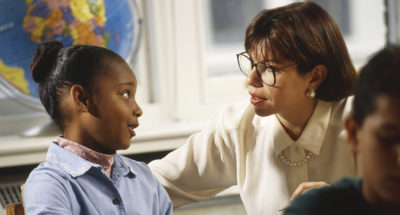
2 x 10: Getting to Know A Student
Teachers spend two minutes a day for ten days getting to know a student with whom they wish to foster a positive relationship.

Teachers spend two minutes a day for ten days getting to know a student with whom they wish to foster a positive relationship.
Teachers will:
Studies with diverse groups of students have found that students describe good teachers as those who listen and take a personal interest in students’ lives.
The teacher-student relationship is at the heart of teaching. Students who know their teachers care about them are more engaged and motivated to learn. They also show greater prosocial — kind and helpful — behavior and increased academic achievement. Indeed, for students in grades 8-12, the teacher-student relationship is the one factor most closely associated with academic growth.
And teachers, too, benefit from good relationships with their students by experiencing the joy of teaching, helping them to maintain their commitment to the profession by preventing burnout.

Do you want to dive deeper into the science behind our GGIE practices? Enroll in one of our online courses for educators!
Comments